For a good reason, tea is the most popular beverage in the world. It’s healthy, uplifting, and can be enjoyed at any time of day. Herbs are an excellent way to add freshness and flavor to your tea garden. Not only do these herbs provide beneficial effects for your tea garden, but they are also known for their medicinal properties.
Knowing which plants to avoid and which ones to include in your gardening routine can create a thriving tea garden perfect for you. When selecting the best herbs for a tea garden, many options exist. Not all herbs are equally suited to growing in a warm, moist environment like a tea garden, so it’s important to consider which will work best for your situation.
Best Herbs for Tea Garden
Lavender
Lavender is a popular herb for tea gardens. It is an effective insect repellant and has anti-inflammatory properties. Lavender flowers are also high in antioxidants, which can help protect plants from damage caused by environmental stressors. Lavender is a versatile herb used in many ways for tea gardens. It has a mild, earthy scent and adds flavor and aroma to tea.
In case you missed it: Growing Organic Lavender – In Pots, And Containers
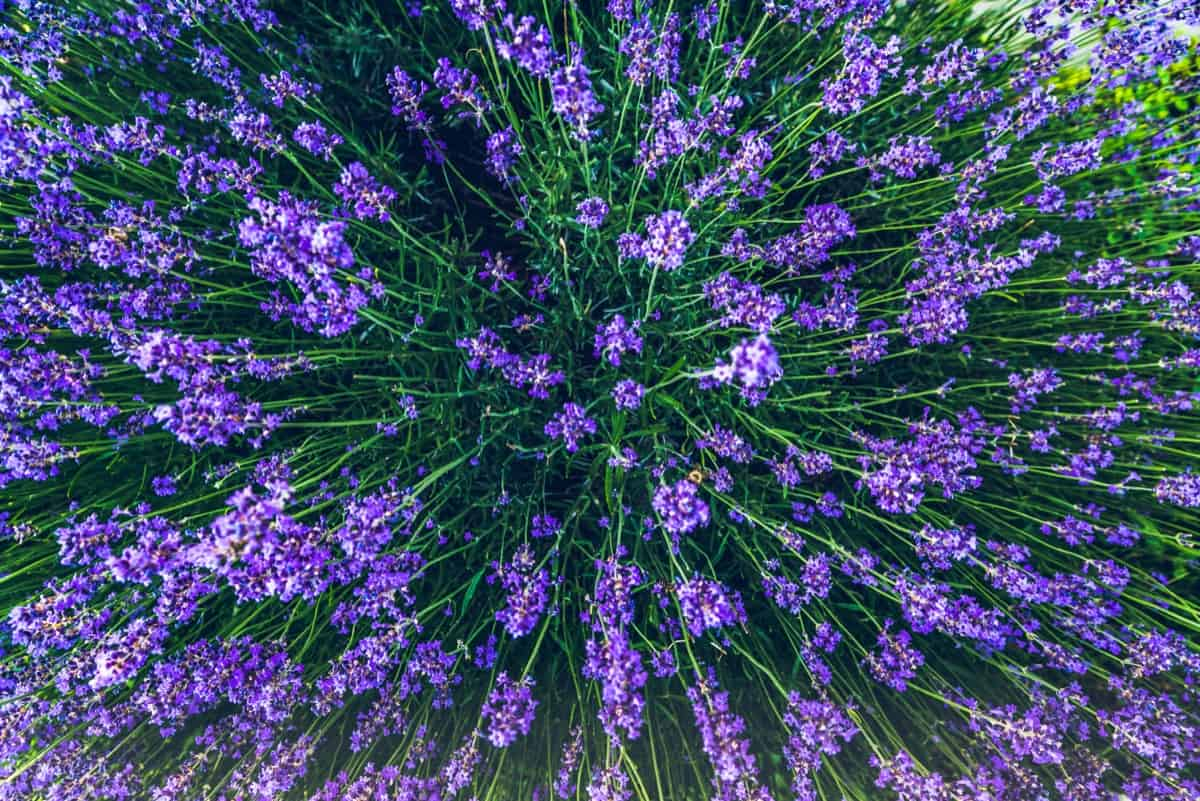
Lavender grows well in most climates, making it a good choice for small gardens or containers. Lavender is another great herb for use in a tea garden. Its scent attracts beneficial insects such as bees, wasps, butterflies, and flies which can pollinate plants and increase their yields. Lavender also helps to deter harmful bugs, such as aphids and caterpillars, from attacking plants in the garden.
Lemon Verbena
Lemon Verbena has lemon-scented foliage and blooms with clusters of white, bell-shaped flowers in late summer. Lemon Verbena grows 1 meter tall, with hairy leaves and fragrant flowers. The essential oil has a lemon flavor and is a natural flavoring in foods and beverages worldwide.
It has a characteristic lemony scent that grows best in full sun or partial shade. Lemon Verbena makes a nice addition to any dry garden or flower bed, and its small leaves make it a good choice for container gardening. Tea made from Lemon Verbena is refreshing and uplifting and can be enjoyed hot and cold.
Mint
Herbs are a great addition to any tea garden, whether you’re looking for flavor or pest control. Mint is a tough weed, so it’s great for tea gardens. It attracts butterflies, and the bees like to collect the flowers. Mint also repels ants and other pests. This herb is beloved for its refreshing, Minty taste and its ability to help keep pests at bay. The essential oil of Mint is widely used in perfumes and cosmetics. Mint tea is a refreshing beverage made by boiling fresh or dried Mint leaves with water. Mint has many health benefits, including reducing inflammation and helping to improve digestion.
In case you missed it: 18 Common Mint Plant Problems: How to Fix Them, Solutions, and Treatment
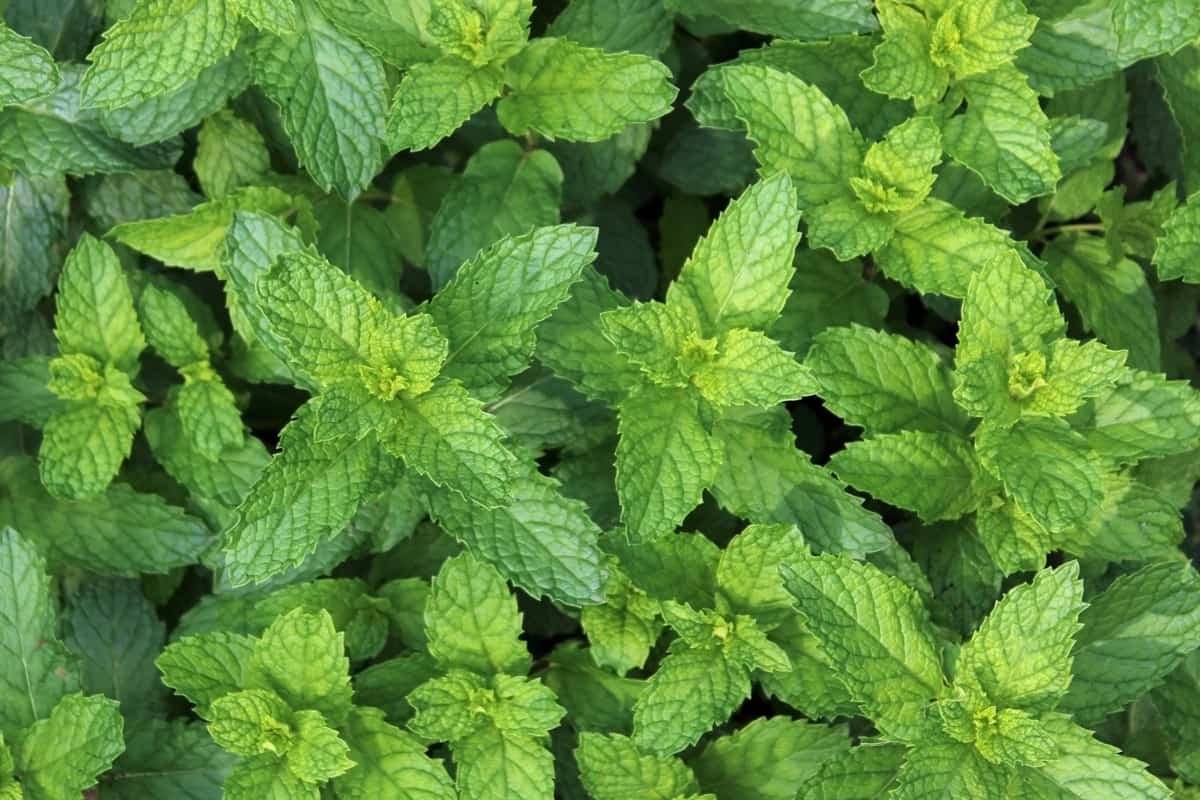
Ginger
Ginger is a versatile spice that can be used in many dishes. It has a warm, sweet flavor and can be used in sweet and savory recipes. Ginger has anti-inflammatory properties. Ginger helps to regulate blood sugar levels. Consuming Ginger can help to rid your body of harmful toxins and chemicals, including those produced by bacteria and fungi. Ginger is an excellent source of antioxidants.
Thyme
Herbs are a great addition to any tea garden, and various herbs can be used for different purposes. Thyme is a common herb used for both culinary and medicinal purposes. Thyme flowers are edible, and the leaves and stems can be used in tea. Thyme is a strong herbal flavor best suited for darker teas like black or green tea. If you are growing Thyme as a fresh herb, ensure you have plenty of sunlight and fertile soil.
Thyme likes warm temperatures, so place it near the garden’s edge where the sun shines the most. Gather fresh leaves in the early spring if you want to use Thyme dried. Look for bunches with tight buds and green leaves that are still flexible. Once you have collected enough leaves, dry them at a moderate temperature until they are brittle but not too dry. To get the most out of your Thyme, harvest it when it is in peak season. Thyme flowers bloom between May and July, so look for clusters of small purple flowers attached to long stems.
Chamomile
Chamomile is a valuable herb for tea gardens because it provides strong flavor and subdued bitterness while retaining some of the tea’s natural sweetness. Chamomile blooms with white flowers that are pollinated by bees. Not only does this flower add beauty and fragrance to your garden, but it is also a good source of nutrients and antioxidants.
In case you missed it: Growing Chamomile, Planting, Care, and Harvesting
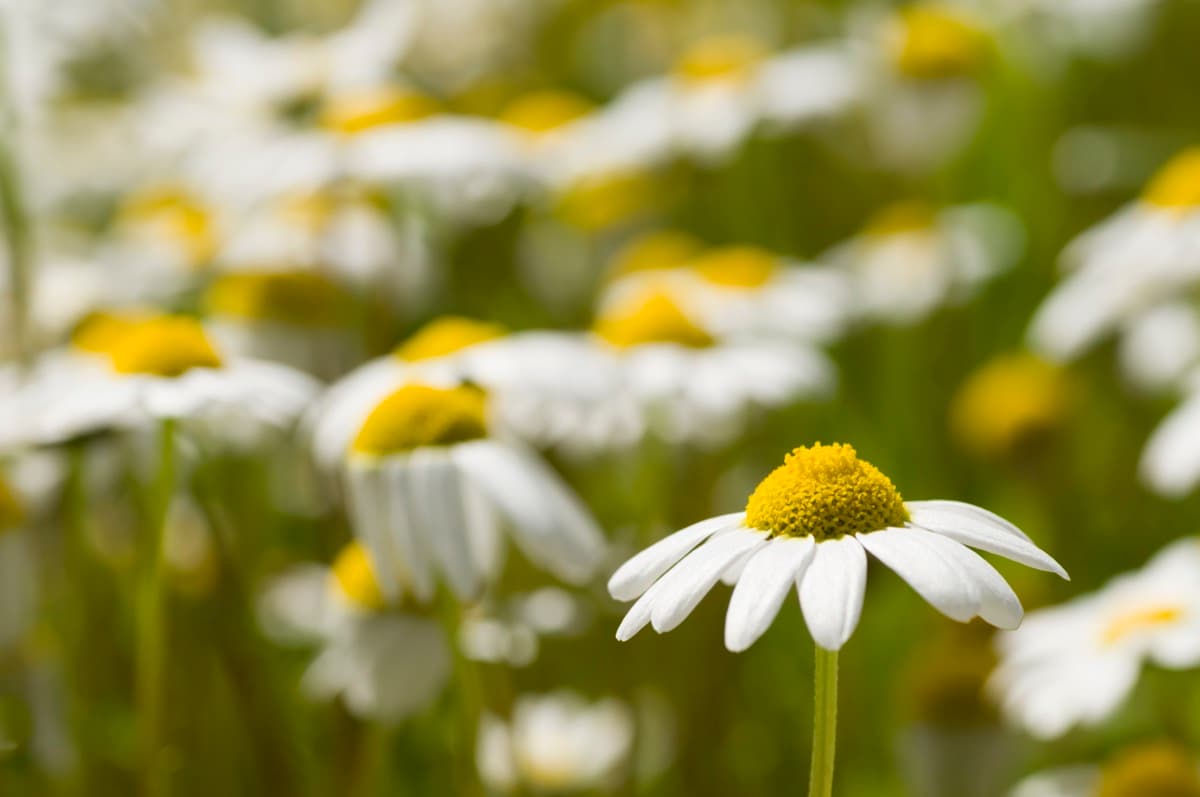
Chamomile tea is known for its calming effects, which can help settle the stomach and ease anxiety. Chamomile grows best in full sun or partial shade. It needs well-drained soil and requires little maintenance. Prune Chamomile in early spring before the flowers form buds, then fertilize every two weeks in late spring and summer with an organic fertilizer.
Marjoram
One of the most versatile herbs for tea gardens is Marjoram. This hardy annual will grow in well-drained soil and tolerate little shade. Marjoram is a great addition to any herb garden, but it’s especially beneficial for tea gardens because its sweet, Minty aroma enhances the flavor of the tea. Marjoram can be used in both culinary and herbal remedies. One of the key components of Marjoram’s aroma is its essential oil, which has been shown to have anti-inflammatory properties.
Cilantro
Cilantro is a favorite herb of many gardeners. It grows best in warm climates and is drought-tolerant. The leaves are aromatic, with a slightly bitter taste and a strong scent.
Rosemary
Rosemary is an evergreen shrub with finely divided leaves and spikes of small, fragrant, purple, or blue flowers. Its potent aroma adds great flavor to tea and other herbal preparations. Rosemary is also reputed to be a natural insect repellent. Rosemary is a favorite herb of many gardeners because it is easy to grow and can be used in various applications.
Rosemary can be used as a general-purpose herb or for specific purposes such as fragrance a room, preventing ants from entering homes, and treating headaches. Rosemary is easiest to grow in direct sunlight but will do well in partially shaded areas. It prefers moist soil with plenty of organic matter but can withstand occasional drought. Propagate by dividing young plants into singles or small groups and planting them after the first frost.
In case you missed it: How to Grow Rosemary from Seed to Harvest: Check How this Guide Helps Beginners
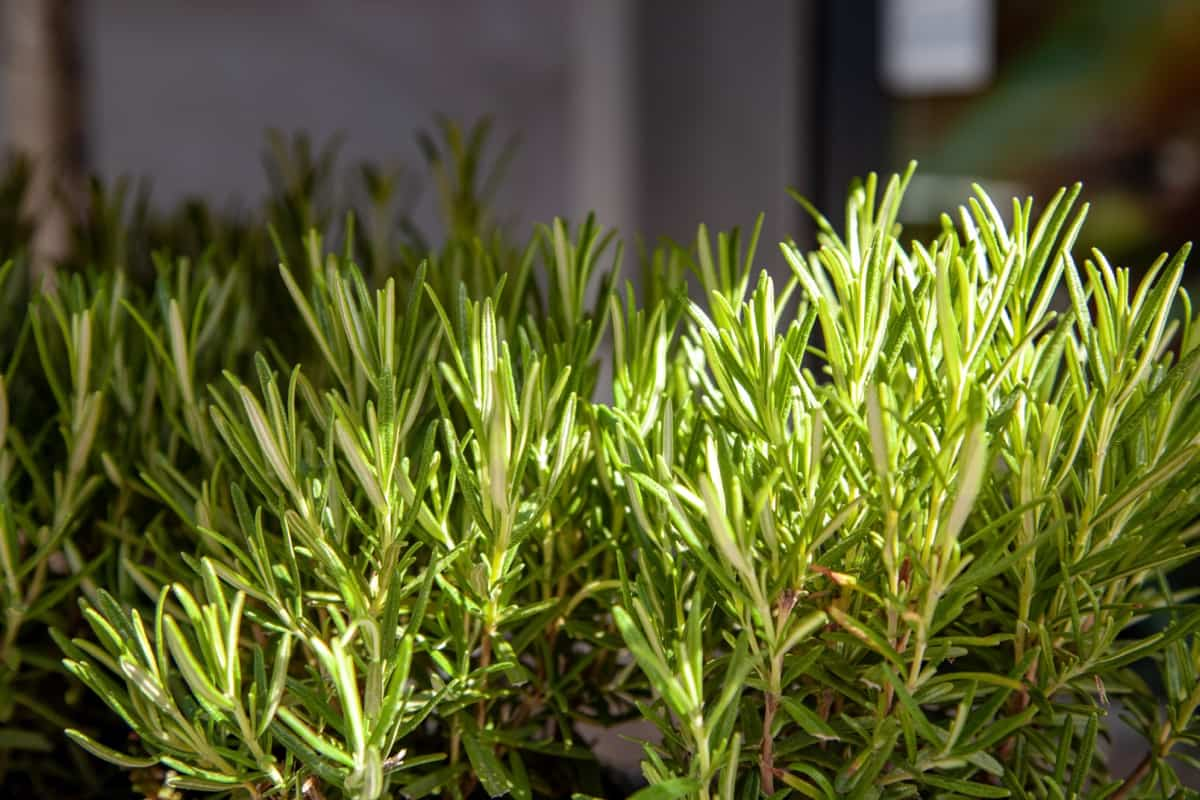
Viola
There are many herbs used in tea gardens to add flavor and aroma. Viola is a delicate herb that can add a floral scent to your tea. It is also high in antioxidants, which make it beneficial for keeping your skin healthy. The Viola is an herbaceous perennial plant that grows 1.5 to 2 meters tall. The leaves are ovate to lance-shaped and range in color from white to light green with a purple hue. The Viola is an excellent choice for a tea garden because it grows quickly, can tolerate low light levels, and produces clusters of fragrant flowers that can be reached by hand.
Lemongrass
Lemongrass is one of the most popular herbs for tea gardens. It’s a great choice for adding flavor and fragrance to your cup. Lemongrass also has health benefits, including anti-inflammatory properties. Choosing the right Lemongrass can be tricky, so we’ll explain what to look for when selecting this herb. Older leaves may have a stronger flavor but will also be less fragrant. Store Lemongrass in an open container in a cool, dry place away from direct sunlight. If you have a garden or plan to grow your herb, adding Lemongrass to your collection is a great way to start.
Sage
Sage is a perennial herb with aromatic, slightly bitter leaves and small purple flowers. Sage is an excellent herb for tea gardens because it tolerates dry conditions well and can grow in full sun or partial shade. You can blend Sage with herbs such as Mint, Thyme, or Rosemary. Sage is an excellent herb for combating pests and diseases in a tea garden. It has antibacterial properties that help to keep the garden clean and free from harmful bacteria. Sage also has insecticidal properties that can help to keep pests away.
In case you missed it: How to Grow Sage from Seed to Harvest: Planting and Care
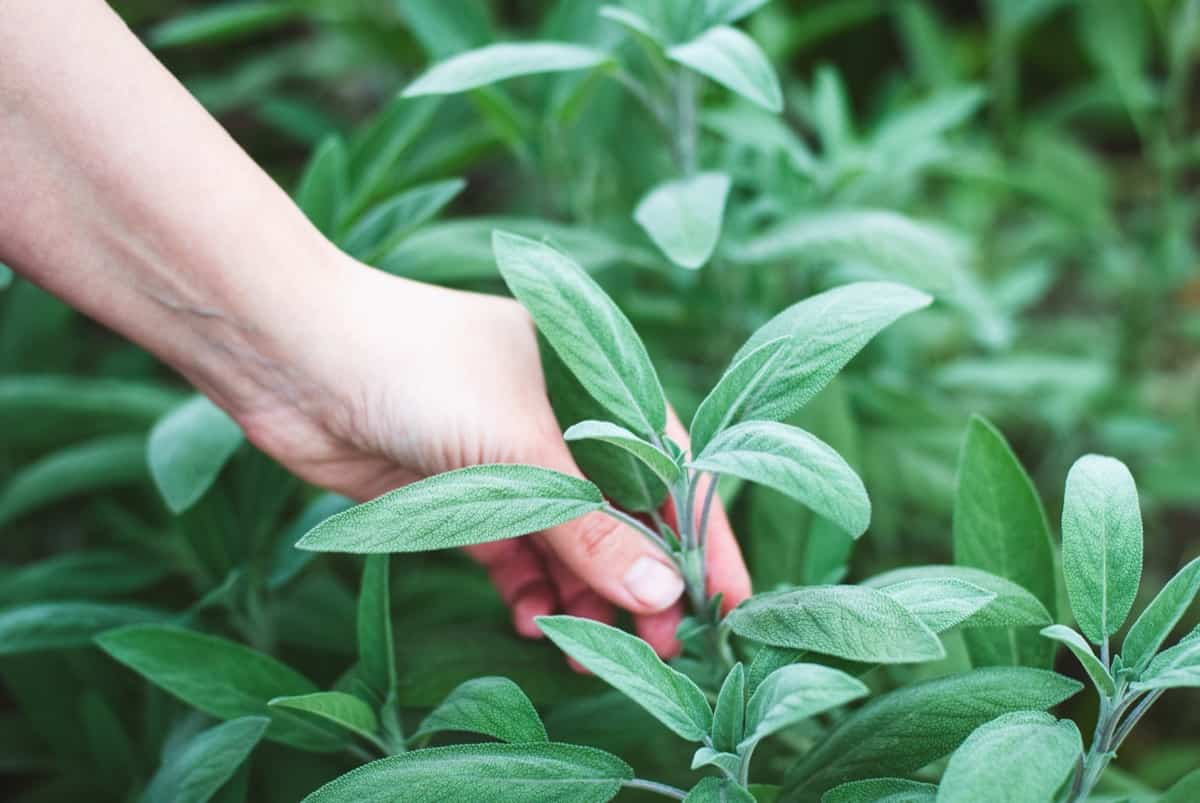
Basil
Basil is the most popular herb for tea gardens. It is a hardy perennial that grows well in dry and wet soils. Basil can be grown indoors or outdoors but fares best in a sunny spot. Basil makes an excellent addition to any garden, but it is particularly well suited to tea gardens because of its strong flavor and aroma. For the best results, grow Basil as part of a mixed herb garden with other plants that complement its flavor profile.
Basil can be grown from seed or cuttings in late summer or early fall. Basil seeds should be planted directly into prepared soil, but new growth can be pricked and planted later into the ground. Basil does not require much water but does make sure to water it regularly during periods of drought.
Catnip
The leaves and flowers of Catnip are aromatic and have been known to have calming effects on cats. This hardy perennial herb is a natural mosquito repellent used as a folk remedy for years. Grow Catnip in full sun or partial shade in well-drained soil. It likes moist conditions but not wetness. Catnip tea is especially refreshing and calming.
Fennel
Fennel is a flowering plant that grows in many parts of the world. It has been used as a spice and flavoring for food for centuries. Some benefits of drinking Fennel tea include reducing inflammation, improving mood, preventing tooth decay, and treating respiratory problems. The tea can also help combat anxiety and stress. Fennel is a perennial herb that is used to flavor tea. The leaves and flowers are used to make an aromatic tea. Fennel can be eaten fresh or dried.
In case you missed it: Fennel Gardening for Beginners, How To Start
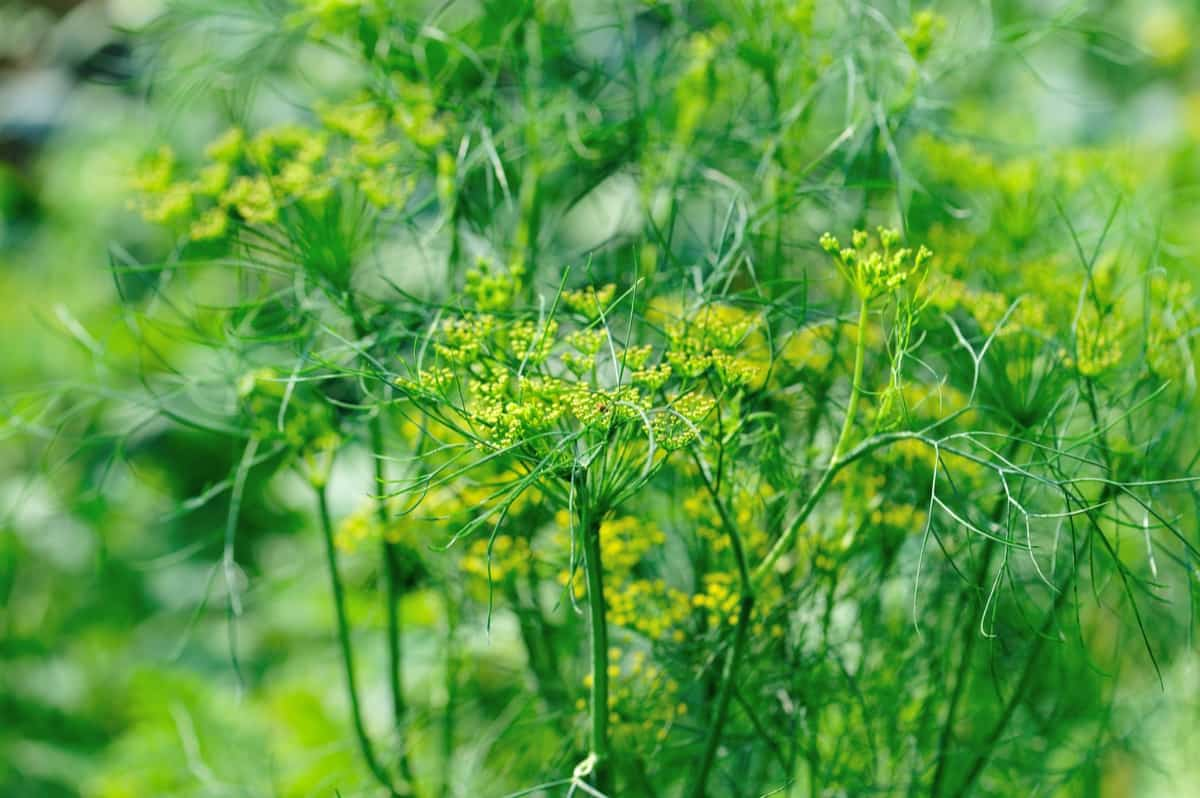
Conclusion
Herbs are an important part of any garden and can be used for various purposes. In general, herbs have many benefits that make them great additions to your tea garden, including helping to protect plants from pests and disease, adding flavor and aroma to your tea leaves, and providing essential nutrients. Keep these benefits in mind when planning which herbs to use in your garden, and you’ll be able to create flavorful teas that help improve the health of your plants and yourself.
- Seasonal Flower Gardening: Best Practices for Spring, Summer, Fall, and Winter
- How to Grow Hibiscus from Flower
- Plantation Ideas for Home Decoration: A Beginners Guide
- Flower Garden Designs and Layouts for Beginners
- Planting and Spacing Techniques in Papaya: A Beginner’s Guide
- Growing Gold: Essential Techniques for Planting Pineapples
- How to Make Kalanchoe Plant Bushy: Home Remedies and Solutions
- 11 Reasons Why Your Gardenia is Not Blooming: Home Remedies and Solutions
- Eco Elegance: The Guide to Designing a Drought-Tolerant Landscape
- Gardening on a Slope: Strategies for Hillside Landscaping
- Nourish and Flourish: Top Organic Mulches for Thriving House Plants
- Everything You Want to Know about Indian Mogra Flower: Discover Uses and Growing
- Green Thumb Success: Expert Tips for Cultivating Greenhouse Pumpkins All Year Round
- Maximize Growth & Flavor: The Ultimate Guide to Companion Planting in Herb Gardens
- How to Control Rhododendron Problems Naturally: Home Remedies and Organic Ways to Fix Them
- Natural Magic: The Remarkable Benefits of Cinnamon for Plants
- Best Steps to Revive Dying Tulip with Natural and Organic Treatment
- 10 Reasons Why Your Angel Trumpet is Not Blooming: Remedies and Treatment
- How to Fix Periwinkle Leaf and Flower-Related Problems: Natural Remedies and Solutions
- How to Fix Zinnias Leaf and Flower Problems: Discover Natural and Home Remedies
- Organic Steps to Induce Lemon Tree Flowers: A Comprehensive Guide
- Bloom Booster: Crafting the Perfect Homemade Bougainvillea Fertilizer
- Optimizing Growth: A Guide to Applying NPK Fertilizer for Potted Plants
- 10 Best Homemade Fertilizers for Rubber Plant: DIY Recipes and Application Method
- How to Boost Female Pumpkin Flowers: Effective Steps for More Flowers and High Yields
- Transform Your Indoor Garden: Top Benefits of Pink Salt for Houseplants
- 10 Best Homemade Fertilizers for Peacock Plants (Calathea): Easy DIY Guide
- Unlock Blooms: 9 Reasons Why Your Potted Chrysanthemum is Not Blooming
- 8 Reasons Why Your Potted Hibiscus is Not Blooming: Fix it with Simple Solutions
- Unlock Blooms: 9 Key Reasons Your Potted Frangipani Won’t Flower
- 10 Reasons Why Is My Ice Plant Not Blooming: Remedies and Treatment
- 10 Reasons Why My Potted Hydrangea Not Blooming: Treatment and Remedies
- 10 Reasons Why is My Wisteria Not Blooming: Remedies and Treatment
- 10 Reasons Why is My Goldfish Plant Not Blooming: Remedies and Treatment
- Maximize Your Space: Ultimate Guide to Balcony Gardening with Grow Bags
- 10 Reasons Why Your Iris is Not Blooming: Remedies and Treatment